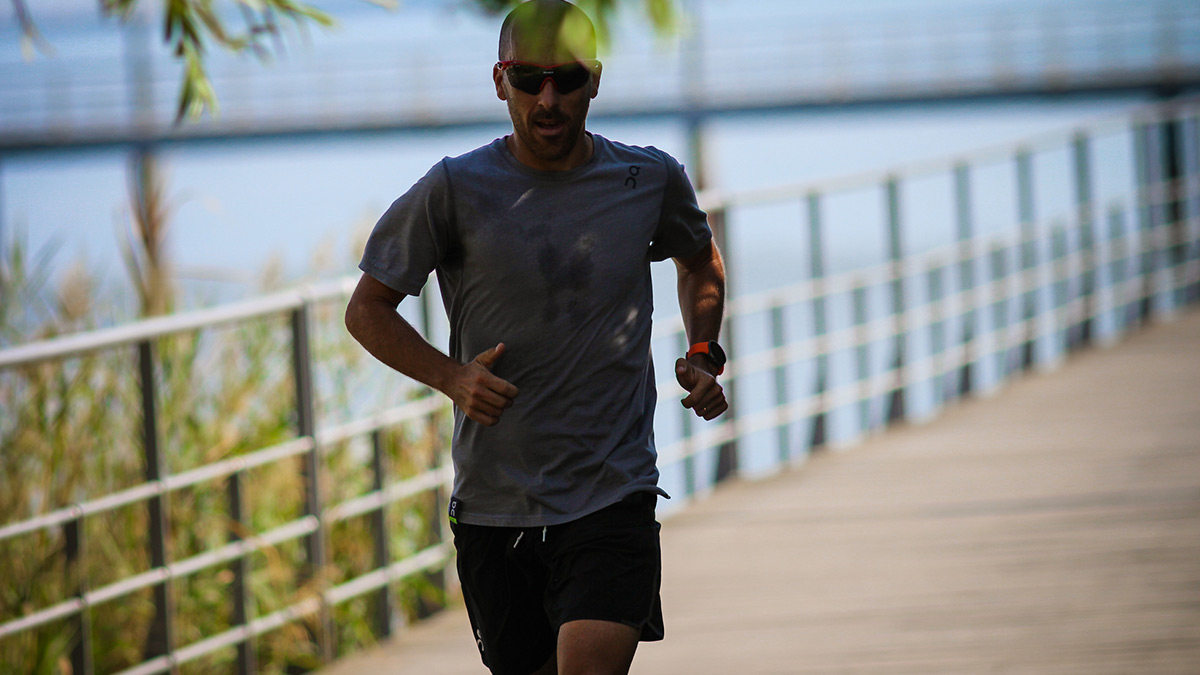Many triathletes are busy people who strive to be efficient. Because of this, one of the first things they might cut out when trying to expedite a workout is the warm-up. This often leads to questions like: “Why spend 15 to 20 minutes wasting time at a low intensity when I could launch directly into it?” If athletes possess this mentality, it’s important for you, their coach, to clearly explain why an effective warm-up is not negotiable—especially for high-intensity workouts and races.
Specifically, coaches should be able to explain how a warm-up prepares the body for exercise, how it enhances performance, and how to execute a proper warm-up in both training and racing.
How a Proper Warm-up Affects the Body
An effective warm-up is more than a ritual to psychologically prepare athletes for a strong effort. As the name implies, the main purpose is to increase the internal body temperature and prime the nervous system for subsequent exercise. At rest, the body’s core is relatively cool and the circulatory system’s blood vessels are narrow. A good warm-up will dilate these vessels, allowing for better blood flow to muscles, superior oxygen delivery, enhanced metabolic efficiency, and central nervous system activation.
As a 2015 study showed that proper warm-ups markedly influence subsequent exercise performance via increases in adenosine triphosphate turnover, muscle cross-bridge cycling rate, and oxygen uptake kinetics. There is also evidence that post-activation potentiation, which is defined as a phenomenon where muscular performance is acutely enhanced when preceded by maximal or near-maximal neuromuscular activation, could lead to improved performance due to factors that include enhanced central output to motor neurons, increased reflex electrical activity in the spinal cord, and phosphorylation of myosin regulatory light chains.
To put it simply, an appropriate warm-up will prime your cardiorespiratory system, muscles, and nervous system for high-performance activity.
What a Proper Warm-Up Looks Like
To reap the benefits of a warm-up, athletes should break it into two parts:
- An active, low-intensity (Zone 1/2) effort that serves to warm the body and enhance blood flow; followed by
- Short, high-intensity efforts that activate the central nervous system and boost oxygen uptake processes
The first part of the warm-up serves to ease the body into an active state. It prepares the various bodily systems (circulatory, muscular, nervous, integumentary, respiratory, etc.) for the effort to come. In training, this section of the warm-up should last 10 to 20 minutes and be done at a very easy, conversational effort. Think of a 15-minute jog, easy swim, or light spin.
The key is keeping the efforts strong (Zone 4/5) and short, so that athletes prime their systems without generating excessive fatigue.
The next component of the warm-up involves harder efforts closer to (or even above) race intensity. In training, these efforts may be classified as part of a pre-set, and include drills, dynamic stretching, and activation exercises. For running, this segment should include strides and form drills, such as B skips, butt kicks, quick steps, and high-knees. For swimming, it could include a set of short 25- to 50-meter builds, and for cycling, it could include 15- to 20-second pick-ups or cadence work. The key is keeping the efforts strong (Zone 4/5) and short, so that athletes prime their systems without generating excessive fatigue.
Taken as a whole, an easy warm-up combined with more intensive neuromuscular activation will ensure that athletes are ready to effectively and safely execute hard workouts and races.
How to Warm-Up for Specific Triathlon Races: Sprint, Olympic, 70.3, and IRONMAN
For a race, the structure and duration of a warm-up should reflect the race distance and an athlete’s unique physiology. In general, the shorter the race, the longer the warm-up should last. This means that a warm-up for a 5K or for a sprint triathlon should actually be longer than one for a long-course triathlon due to the higher immediate intensity.
Although every athlete is different and it’s important for individuals to experiment to determine how best they should structure a warm-up, the following are basic protocols that I recommend to many of my coached athletes.
Sprint triathlon warm-up: Sprint triathlons require an extensive warm-up. For most fit individuals who will be exercising in an upper Zone 3 to Zone 5 intensity for the duration of the race, I recommend a 15- to 20-minute easy ride with 4X1 builds to around threshold. This should be followed by 10 to 15 minutes of easy running followed by four 15- to 20-second strides and light drills. If it’s warm outside and the race director allows it, a five- to 10-minute swim with a couple of brief builds (20-or-so hard strokes) to around 90 to 95 percent is beneficial.
Note: If athletes are unable to remove their bikes from transition to do a warm-up, skipping the bike warm-up and doing a 15- to 20-minute easy run followed by strides and drills is adequate.
Olympic-distance triathlon warm-up: A good Olympic-distance warm-up looks similar to that of a sprint. Athletes should cycle for 15-or-so minutes at a very easy effort, complete a 10-minute run, swim for five to 10 minutes with builds, and follow all this with dynamic stretching and drills. A bike warm-up, although highly recommended, is less important for Olympic-distance races than it is for sprints.
70.3 warm-up: For a 70.3 triathlon, warm-ups should be shorter than warm-ups for sprint or Olympic-distance races. Athletes should avoid depleting their glycogen stores prior to the race start with a long warm-up, but it’s beneficial to do something, such as a light jog for five minutes, to raise the core body temperature. If it’s possible to enter the water, athletes should do a brief five to 10-minute swim with builds. While standing in line, arm swings and neck rolls are useful for enhancing mobility.
Because it’s often difficult to get in a good warm-up prior to a 70.3 (especially when there are 3,000-plus athletes lined up for a rolling start), I usually recommend athletes build into the swim and treat the first five-or-so minutes as a warm-up. The exception is for elites who start the race with a 200- to 300-meter sprint. For these athletes, a longer swim warm-up is essential.
IRONMAN warm-up: In the vast majority of instances, athletes should forgo an in-depth warm-up prior to an IRONMAN. The day is long and it’s typically not productive to run or cycle prior. If possible, getting acquainted with the water and doing an easy five-minute swim can be useful for loosening the upper body and getting psychologically prepared for the race, but it’s not essential. When the race begins, it’s important to be disciplined and ease into it. Athletes should start at a low Zone 2 effort and build from there.
Conclusion
It’s difficult to overestimate the importance of a proper warm-up. Athletes who are diligent with warming up will be able to execute their workouts with greater precision, comfort, effectiveness, and with less likelihood of injury than athletes who rush into them. In racing, warm-ups are absolutely essential for maximizing performance. Rather than viewing warming up as an obstacle, athletes should embrace its power and treat it as an integral component of training and racing.


